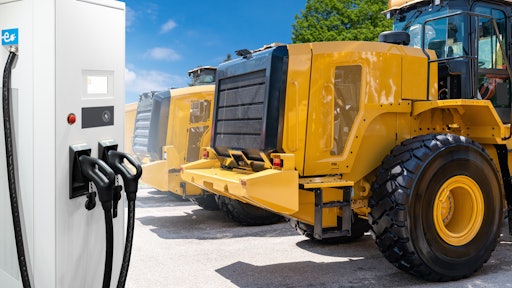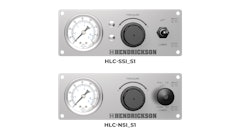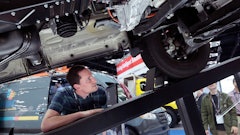
As construction and builder companies look to modernize their vehicles by transitioning to electric vehicles (EV), the benefits of EV technology has driven considerable interest. Key to this transition is the use of connected vehicle data and analytics in the EV that can be useful to fleets for managing and maintaining each vehicle within the fleet.
Construction professionals can widely benefit from specific applications within their fleets, including the use of sales personnel visiting different locations, customer service and quality assurance teams, and contractors using light- and medium-duty trucks.
Recently, Americans have increasingly shifted toward SUVs, pickup trucks and crossover vehicles, with some analysts estimating that SUVs, pickup trucks and vans could make up 78% of vehicle sales by 2025. For construction professionals, larger plug-in truck options could expedite this transition toward electric.
Large Amounts of Data are Difficult to Process
Construction vehicle fleets, their insurance providers, maintenance and aftermarket companies are all looking to harness more of this intelligent telematics data from EVs. However, the amount of data produced every day keeps growing. As a result, these businesses have more data than ever at their disposal to help make informed business decisions. But this vast amount of data brings in plenty of new challenges in capturing, digesting and analyzing the entirety of the data in a cost-effective manner.
To truly be effective and useful, data must be tracked, managed, cleansed, secured, and enriched throughout its journey to generate the right insights. Construction companies that transition to EVs for their fleets are turning to new processing capabilities to manage and make sense of this data.
There are several areas construction professionals should look for in determining the right time to adopt electric trucks for their fleet. First, understand that prices continue to come down from an initial investment point of view. EVs remain well above the industry average, according to Kelley Blue Book, but prices have been decreasing in 2023 and new federal incentives could lower them even more.
Construction fleets should also look for solid-state battery technology, as opposed to today’s lithium-ion batteries, which use a liquid electrolyte to conduct electricity. Solid-state batteries replace this liquid with a solid, often ceramic material, meaning OEMs can build about two times more energy into the same space.
Embedded Systems Technology has Been the Norm
Most importantly, construction fleets should have a solid understanding of how they can leverage data from their electric trucks and vehicles.
Technological advancements have made it possible for embedded systems to communicate with sensors within the vehicle as well as the cloud server, in an effective and efficient manner. Leveraging a distributed computing environment that optimizes data exchange as well as data storage, automotive IoT improves response times and saves bandwidth for a swift data experience. Integrating this architecture with a cloud-based platform further helps to create a robust, end-to-end communications system for cost-effective business decisions and efficient operations. Collectively, the edge cloud and embedded intelligence duo connect the edge devices (sensors embedded within the vehicle) to the IT infrastructure to make way for a new range of user-centric applications based on real-world environments.
This has a wide range of applications for construction professionals where resulting insights can be consumed and monetized by the OEMs. The most obvious use case is for aftermarket and vehicle maintenance where effective algorithms can analyze the health of the vehicle in near real-time to suggest remedies for impending vehicle failures across vehicle assets like engine, oil, battery, tires and so on. Construction fleets leveraging this data can have maintenance teams ready to perform service on a vehicle that returns in a far more efficient manner since much of the diagnostic work has been performed in real time.
Additionally, insurance and extended warranties can benefit by providing active driver behavior analysis so that training modules can be drawn up specific to individual driver needs based on actual driving behavior history and analysis. For construction fleets, the active monitoring of both the vehicle and driver scores can enable reduced TCO (total cost of ownership) for fleet operators to reduce losses owing to pilferage, theft and negligence while again providing active training to the drivers.
Powering the Future of Fleet Management
AI-powered analytics leveraging IoT, edge computing and the cloud are rapidly changing how fleet management is performed, making it more efficient and effective than ever. The ability of AI to analyze large amounts of information from telematics devices provides managers with valuable information to improve fleet efficiency, reduce costs and optimize productivity. From real-time analytics to driver safety management, AI is already changing the way fleets are managed.
The more datasets AI collects with OEM processing via the cloud, the better predictions it can make. This means safer, more intuitive EVs for construction professionals in the future with more accurate routes and better real-time vehicle diagnostics. This will ensure a smooth and beneficial transition over to electrified technology for vehicles in the fleet.





























